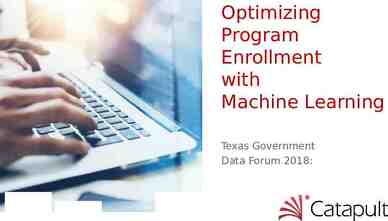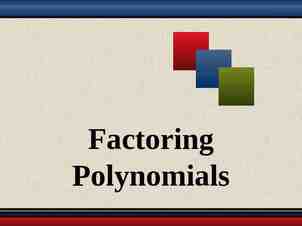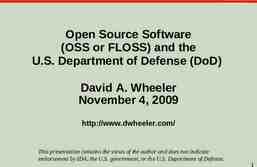Future Internet: Infrastructures and Services
54 Slides5.26 MB

Future Internet: Infrastructures and Services

Contents: 1) Cloud Infrastructures 2) Cloud Applications 3) XIFI 4) Fiware 5) Fi-Star

Future Past/Present CPU MEMORY STORAGE OS Cloud Virtual Machine (VM) Local Workstation Terminal & Browser based OS

Desktop Apps Single-user Applications Machine specific installation User buys software Cloud Apps Multi-user Applications No installation for user Accessible over the network User subscribes to service

Desktop Apps Local Storage Cloud Apps Cloud Storage E.g., DropBox MS Office Google Docs

How the Cloud works Virtualization of resources: Compute, Network and Storage

How the Cloud works Cloud provisioning models

Cloud Services

Cloud Main Advantages 1. Scalability 2. Elasticity 3. High Availability

Scalability - Add nodes on the fly! - Create new VMs through software rather than setup new machines. - Upgrades VMs with the click of a button - Add nodes to extend the cloud infrastructure without downtime

Elasticity - Allows automated scaling in order to adapt to the current demands Exampe: Video streaming company

High Availability - Minimized downtime for services Increased IT-efficiency results to a better infrastructure management reducing downtime significantly

Allows the virtualization of resources Offers services to manage the virtualized resources

OpenStack architecture Distributed, modular and scalable.

Virtualization

Horizon: Provides a GUI for basic cloud administration functionality KeyStone: Authorization. Manages users, tenants, roles etc. Ceilometer: Monitors, collects and stores usage data

Heat: Orchestration. Automates deployment for compute, storage and network resources. Cinder: Block storage for VMs Neutron: Networking

Swift: Object storage service for storing and retrieving data. Glance: Disk image service Nova: Compute Service. Schedules and manages VM instances

OpenStack architecture

Openstack Architecture of Intellicloud Cloud Controlle r cloud.intellicloud Cloud Network Cloud Cloud Compute Cloud Compute c06.intellicloud Cloud Compute Cloud network.intellicloud Compute Compute c01.intellicloud Network Service (Quantum) Compute Service (Nova) Identity Service (Keystone) Network Service (Quantum) Image Service (Glance) Virtual Network Service (OpenVSwitch) Virtual Network Service (OpenVSwit Compute Service (Nova) KVM Hypervisor Block Storage (Cinder) NTP Server Network Service (Quantum) NTP Server Dashboard Service (Horizon) MySQL Server RabbitMQ Server NTP Server Openstack Grizzly, 8 nodes installation 48 Cores 256 GB Ram 8 TB

Internet Physical Network Architecture eth0 eth1 cloud eth0 147.25.50.1/141 10.10.10.10 network eth0 br-ex 147.25.50.2/142 10.10.10.9 c01 c03 c05 147.25.50.3 10.10.10.11 147.25.50.5 10.10.10.13 147.25.50.7 10.10.10.15 c02 c04 c06 147.25.50.4 10.10.10.12 147.25.50.6 10.10.10.14 147.25.50.8 10.10.10.16 eth1, br-int enstack Management Network eth1 enstack VM Configuration Network br-int enstack VM Internet Access br-ex local switch

Intellicloud Services Current Cloud Services GEs IaaS PaaS – – – – CPU Memory HD Network & Internet Virtual Topologies – OS Images – IaaS GE (Development Platform) SaaS – IaaS PaaS – A Future Internet Application

Building Applications on the Cloud

Cloud Application Web Application Cloud Application

Cloud Application Use Generic Enablers as building blocks for apps! GE 1 GE 3 GE 2 GE 4

Cloud Application Business Logic Authentication GE2 GE1 Database connect GE5 GE3 GE4

Generic Enablers A GE consists of a set of services with common background all designed using the REST architectural style. Example GE Services: Get users Get user Delete user Create new user

Generic Enablers REST API services Call service using the URL: GET www.myservice.com/users GE POST www.myservice.com/users DELETE www.myservice.com/users?id 1 GET – POST -DELETE Output: JSON or XML & response code

Specific Enablers Combination of services from at least 2 different GEs GE2 GE1 SE REST API Output: JSON or XML

Example Architecture: Interact

XIFI Federation

FI-WARE FI-WARE FI-WARE platform platform will will serve serve objectives of usage areas objectives of usage areas and and will will have the ambition of fulfilling have the ambition of fulfilling the the needs needs of of a a broader broader market market Utilities and environment Tourism eHealth Transport Smart Grid Other Usage areas E- business The aim of FI-WARE is to be useful for Europe 21/02/2024 33

Advanced OpenStack-based Cloud rich library of Generic Enablers tourism Transport, Mobility and Logistics e-government Smart Energy Grid eHealth 34

The VISION FI-WARE will be a technological foundation to satisfy the demands of application/services providers and consumers across various usage areas, stimulating and cultivating a sustainable FI service ecosystem Consumers People Businesses Apps/Services Provider Platform Provider

Elements & Functions of FI Core Platform The FI Core Platform comprises a set of technological “Generic Enablers” which are considered general purpose and common to several current and future “usage areas” Generic Enablers (therefore, the FI Core Platform) will provide open interfaces for development of Applications Usage area projects under the PPP Cloud Hosting App/Service Delivery Support Services Interface to IoT Interface to Network Security, Trust Dev Tools 36

FI-WARE Generic Enablers (GEs) User authentication – Why not having a unique authentication system for all our actions? – Identity management GE Offers authentication and authorization for users, services or applications 37

FI-WARE Generic Enablers (GEs) JSON Data Storage – A service that provides an API for storing and retrieving json objects. – We don’t need to worry about scaling! The service takes care of that! 38

FI-WARE Generic Enablers (GEs) Context Broker – Users subscribe to context and get notified on context updates. – Allows efficient filtering – E.g., Interest topic distribution application 39

Generic Enablers GEs at a glance: – Open specification for developing modules – Implementation from a service provider – Images with installed GEs (available by FIWARE) – Documentation Installation parameter configuration sensor connectivity Protocol Adapter GE data collection sensor detection sensor connectivity Gateway Device Management GE subscription interface data registration Publish/ Subscribe GE context data acquisition configuration parameter Data Handling GE data collection (GUI) configuration parameters (NGSI10) context management (NGSI9) communication protocol login authentication IoT Broker GE context management (NGSI9 Configuratio n management GE context to device (NGSI9) Mediator GE communication protocol Identity management GE access token 40

Cloud in sensitive domains: Healthcare provisioning Why cloud computing & what is the problem? – Standards, regulations, recommendation legislation, ISO standards – Security standards (ISO 27000) there are severe restrictions to data transfer, storage, aggregation and analysis – Cloud computing: remote services (data management in distant datacenters) 42

Problem area: Healthcare provisioning Data Data Data Data Data Data Data Data DataDataData Data Data Data Data BigData Data DataData Data Data Data Data DataData Data Data Data Data Data Data Data Data 43

Hybrid Cloud Deployment: Software to Data Hybrid Cloud: – A reverse cloud approach that offer the required framework (Public Cloud) to allow Software Enablers to be initiated at clients’ sites and to be hosted in a Private Cloud Software to data cloud model – Provider Edge – Consumer Edge Healthcare Provider of Platform private services Deployment offor developers Provision of cloud Software Blocks Software Blocks as utility services 44

FI-STAR at a glance Future Internet Social and Technological Alignment Research (FISTAR) project – attempting to identify suitable software to data solutions based on Generic Enabler technology provided from FI-WARE – to establish early trials in the health domain FI-STAR will develop and deploy 8 use case Future Internet (FI) applications FI-STAR Provider: FI-WARE FI-STAR Use Case developers Provision of Private CloudDeployment of Software Blocks Software Blocks as utility services 45

Overall Goal FI-STAR establishes early trials in the Health Care domain building on Future Internet (FI) technology leveraging on the outcomes of FIPPP Phase 1. To meet the requirements of a global Health industry FI-STAR will use a fundamentally different, “reverse” cloud approach that is. It will bring the software to the data, rather than bringing the data to the software. FI-STAR will deploy and execute 7 early trials across Europe FI-STAR will validate the FI-PPP core platform concept by using GEs to build its framework (7

47

Building blocks of FI-Applications Generic Enablers (GEs) are considered as software modules: – offer various functionalities along with protocols – interfaces for operation and communication. Using GEs FI-STAR will develop Specific Enablers (SEs) that highlight: 1. 2. 3. 4. Light-weight applications Robust security and privacy functionality Optimal usage of network resources Virtualization of resources 48

Generic Enablers GEs at a glance: – Open specification for developing modules – Implementation from a service provider – Images with installed GEs (available by FIWARE) – Documentation Installation parameter configuration sensor connectivity Protocol Adapter GE data collection sensor detection sensor connectivity Gateway Device Management GE subscription interface data registration Publish/ Subscribe GE context data acquisition configuration parameter Data Handling GE data collection (GUI) configuration parameters (NGSI10) context management (NGSI9) communication protocol login authentication IoT Broker GE context management (NGSI9 Configuratio n management GE context to device (NGSI9) Mediator GE communication protocol Identity management GE access token 49

The High level architecture of the diabetes care FI application 50

Architecture of GEs 51

Example 1

Example 2

Example 3 54








